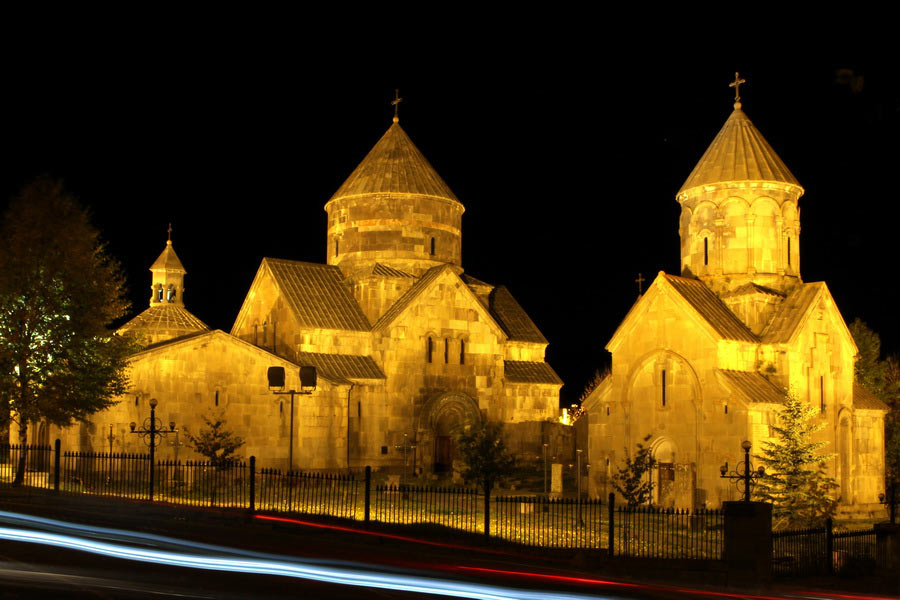
In the northwest part of Tsakhkador on the Pambak ridge terraced slope there are three churches of ancient Kecharis monastery which in the 12 th – 13 th centuries was the large spiritual centre of Armenia with its own school. Kecharis is the classic example of Armenian medieval architecture.
The first to appear was the main temple – Gregory the Illminator church. It was erected by the order of the ruler of the land - Grigor Pakhlavuni in 1033. This fact is reflected in the well-preserved inscription found above the southern doors. The temple has a spacious hall crowned with a wide dome destroyed by 1828 earthquake. Its exterior is rather modest. The entrance portals are framed by columns between with arches between them; the narrow windows from above are also framed with arches.
To the south from the church there is the small Surb Nshan church also built in the first half of the 11 th century. The church is crowned with a high round drum. In 1214 the last church of the monastery – St. Katogike –was constructed. This masterpiece of architecture was built by the new owner of the land – prince Vasak Hagbakyan. It is the most complex structure with the cross-shaped facade, the high dome, and the niches inside the hall. The slender silhouette of the church and the gracefully decorated interior correspond to the best artistic traditions of that time.
The fourth church of the monastery – St. Arutyun church or Resurrection was erected in 1220. It has a cylindrical dome resting on a high drum. This small rectangular church with a high dome is the burial place of some priors of Kecharis monastery. Between the churches of St. Gregory the Illuminator and Surb Nshan a small rectangular chapel of the 11 th century used to stand. That is where the tomb of the monastery founder, Grigor Magistros Pakhlavuni, is.
In the first half of the 13 th century almost all structures of the monastery were destroyed by Mongols but in the middle of the century they were completely restored.
The monastery vicinities are rich in graceful khachkars and tombstones. One of the most significant monuments on the monastery grounds is the gravestone khachkar of architect Vetsik (13th century).

